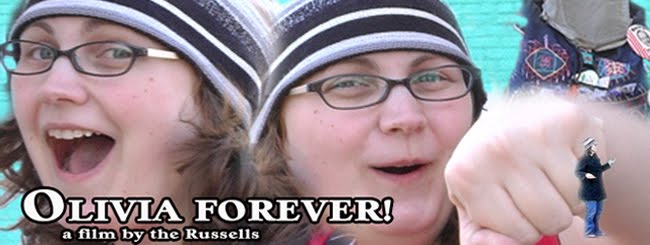
On Friday, we got another twenty seconds in the can. If that doesn't sound particularly promising, well, it is and it isn't.
The shoot in question was for a cut-away gag. The movie's going along, a scene's in progress, someone mentions something that gets us into this scene, scene does it's thing (ha!), and we're back to the original scene. We have a couple of these sorts of gags planned, one of which involves a Sasquatch we're still in the process of trying to acquire without spending too much money.
That's a tricky thing, actually: part of how we can justify making films of perhaps limited commercial appeal is that we make it out of our own pocket, and part of how we can justify making films out of our own pocket when we don't have that much in our pocket to begin with is that we make our films cheaply and quickly. We pride ourselves on being the scrappy low-budget filmmakers. Our most expensive film to date cost under five hundred dollars. And so we can't in good conscience justify spending almost as much for a Sasquatch costume that's going to have at most thirty seconds of screen-time, even if perhaps those thirty seconds would be worth it.
The shoot we had on Friday, this cut-away gag Halloween Party shoot, hardly cost us anything in terms of dough (which, of course, we like) but did take a lot of preparation and planning and coordinating of schedules. Our actors aren't getting paid for their work and have day jobs; finding a day that two actors have in common for a rehearsal and shoot is sometimes a chore. Finding a day when a third can join them can be nearly impossible. Having learned this lesson in the past, we like to write around "guest stars"-- limiting most actors to one really good scene. See, for example, Son of a Seahorse, where we did this extensively.
But this film, and this scene, aren't really amenable to that approach. For the Halloween Party to be convincing, we needed it to look like a party. And so, in addition to our two leads, we had planned on seven background characters. I'm not going to call them "extras", because it's vaguely dehumanizing. And, having worked on a few horror sets as an extra, I can vouch that most directors treated me and my fellow extras like cattle, flesh-and-blood cogs in place to realize their vision. And if I ever treat a fellow human being like that, I hope someone punches me in the God-damn face.
So: background characters. Seven of them. We even had a bio in mind for each, what their relationships were with one another, et cetera. Not because the viewer would pick any of that up-- it is, again, only a twenty second shot, with the focus squarely on the two leads-- but because it would give the actors something to do rather than stand there bored out of their wits.
I confirmed the day before the shoot with some of them and the day of the shoot with the others. One I saw in person less than two hours before the shoot. You can probably see where this is going: of the seven, only two showed up. We were so disheartened that we didn't give our two background actors their bios, as it's a little hard to explain a web of relationships between just two people.
We, of course, made due, as that's what you have to do when you're the scrappy low-budget filmmaker. We even put Tom in the shot, his face obscured by a Virtual Boy, so that we'd have a third background character. Because we're a two person crew, this necessitated balancing the boom mike rather precariously on a light-stand. We shot about a dozen takes in about as many minutes, turned out the shop-lights and watched one of those aforementioned horror movies in which the lowly extras were treated so poorly. Everyone seemed to have a good time, and when we were done, we had twenty seconds of footage.
And over the weekend, we were faced with that fact-- we had expended a lot of time and energy for twenty seconds of footage. We have a shoot coming up on Wednesday that might net us another thirty, maybe forty. We're lucky if we get a shoot a week-- usually something comes up with one actor or another and we have a week or two with nothing. And so getting these tiny little fragments for a feature-length film, well, it's a little maddening, no doubt about it. It's a long ways from
Seahorse, where we'd typically shoot ten or fifteen minutes at a time.
At the same time, we're kinda consciously trying to shoot all this small stuff now so that it makes it into the film. We've been working on this film for so long that we just want to be done with it; if we shot all the major (i.e., long) scenes, we might just declare the film done before we've shot the little piecemeal stuff. We'll say, "Well, we don't really need it", and maybe we really don't. I mean, you don't really
need anything-- there's always a way to make it work, and one should always be flexible.
We don't need a Halloween party cut-away gag, and we don't need a Sasquatch, but at the same time they add something to the film, and they're things that we want. By shooting them now, with all these other, bigger, more necessary scenes still ahead of us, we ensure that they don't get lost in our eventual frustration and apathy.
At the same time, we want to cut down on that frustration and apathy, and so we're aiming to alternate some of these little shoots with some bigger ones. And maybe even doing two shoots a week, if we can.








